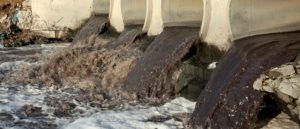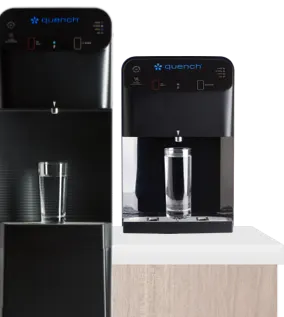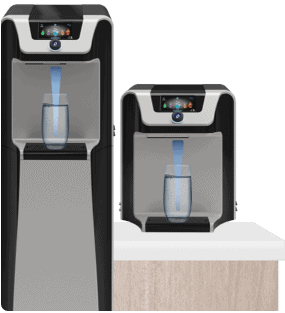Every year on April 22nd, we celebrate Earth Day! This annual celebration is aimed at raising awareness of the need to protect Earth’s natural resources for future generations and discover ways to defend the planet against problems like deforestation, pollution, and water scarcity.
This Earth Day, your organization can do its part by supporting water conservation at work. Read on for a closer look at how you and your teams can encourage more sustainable water use both now and in the future.
What Is Water Scarcity and Sustainable Water Management?
Simply put, water scarcity is the lack of fresh water resources to meet standard demand. Unfortunately, this is becoming an increasingly prevalent issue worldwide, with one in ten individuals lacking access to clean water, according to World Vision. That’s where sustainable water management (SWM) becomes an important factor. SWM refers to the ability to meet current water needs without compromising the capacity of future generations to do the same. Today, organizations and communities across the globe are working together to improve water efficiency, consumption, and management for the long-term betterment of the planet.
Not only are workplaces promoting environmentally friendly practices as a moral imperative, but also because sustainable workplaces are becoming more attractive to employees — for some, it’s even a non-negotiable. A sustainability report from IBM found that 70% of employees and job seekers say an environmental sustainability program makes an employer more appealing, while 44% of executives consider eco-friendly initiatives to be a powerful tool for recruitment and retention.
5 Ways to Promote Workplace Water Sustainability
Earth Day is now the largest environmental movement and secular observance in the world, with over 190 countries and one billion individuals actively engaging in the celebration each year. Your teams can support water security this April and beyond by:
- Increasing water usage awareness: Ensure your employees recognize the looming consequences of a water shortage, especially if they’re located in water stressed areas. You can accomplish this by discussing water efficiency at team meetings, introducing your established water-saving initiatives, or regularly reporting on water use figures.
- Conducting regular water system assessments: You can continuously evaluate your water consumption with water system reviews. To do this, check for leaks, study your utility bills, and, most importantly, upgrade to modern, water-efficient appliances wherever possible to encourage long-term conservation.
- Implementing water reuse practices: Water reuse is a simple yet effective strategy to make the most of every water resource at work. For example, employees and business leaders can recycle leftover drinking water to irrigate office plants or outdoor green areas.
- Developing a water conservation plan: To be certain that you’re not only setting organizational sustainability goals but also meeting them, too, you can establish a conservation plan. Develop a written program for how employees should work to optimize water consumption (e.g., only running the workplace dishwasher when it’s full, etc.) and setting benchmarks that can be continually monitored.
- Introducing more efficient drinking water systems: Organizations can re-evaluate their systems for providing drinking water to discover and introduce more eco-friendly solutions. This often involves transitioning from bottled water coolers to bottleless machines with filtration systems.
Leaving Bottled Water Solutions in the Past — Making the Switch to Bottleless
Traditional water delivery systems have a massive environmental footprint, considering the delivery lifecycle consumes energy, burns fossil fuel, and overruns landfills with plastic that never gets recycled — not to mention it wastes gallons of water for every gallon of water that’s bottled: According to a report from Quench, it takes two to five jugs of water to manufacture a plastic jug, including all the process steps to extract the petroleum, make the plastic, and form the bottle.
For more efficient, sustainable workplace drinking water, teams are making the switch to bottleless water coolers. By replacing bottled water dispensers with eco-friendly, filtered bottleless alternatives, your business can:
- Eliminate greenhouse gas emissions from water delivery
- Avoid major infrastructure changes
- Ensure long-term cost savings
- Take advantage of immediate efficiency and sustainability gains
Our Commitment to a Sustainable Future
While Earth Day draws international attention to the environment, promoting conservation and sustainability, Quench® is dedicated to demonstrating a year-round commitment to a more sustainable future.
Workplace drinking water solutions from Quench help you reduce your reliance on single-use plastic while improving your sustainable water management and providing users with an endless supply of fresh water. A Quench bottleless water cooler can take your water supply to the next level while eliminating the need for gas-guzzling delivery trucks, plastic jugs, and single-use plastic bottles. The results speak for themselves:
- Save 7,000+ single-use plastic bottles with one bottleless dispenser.
- Reduce CO2 by 53% when replacing 5-gallon water jugs with a bottleless cooler — for an office of 50 daily users.
- Save 120 trees by replacing one 5-gallon jug with a bottleless dispenser.
Ready to introduce a more sustainable water system with help from Quench? Get a free quote today.








